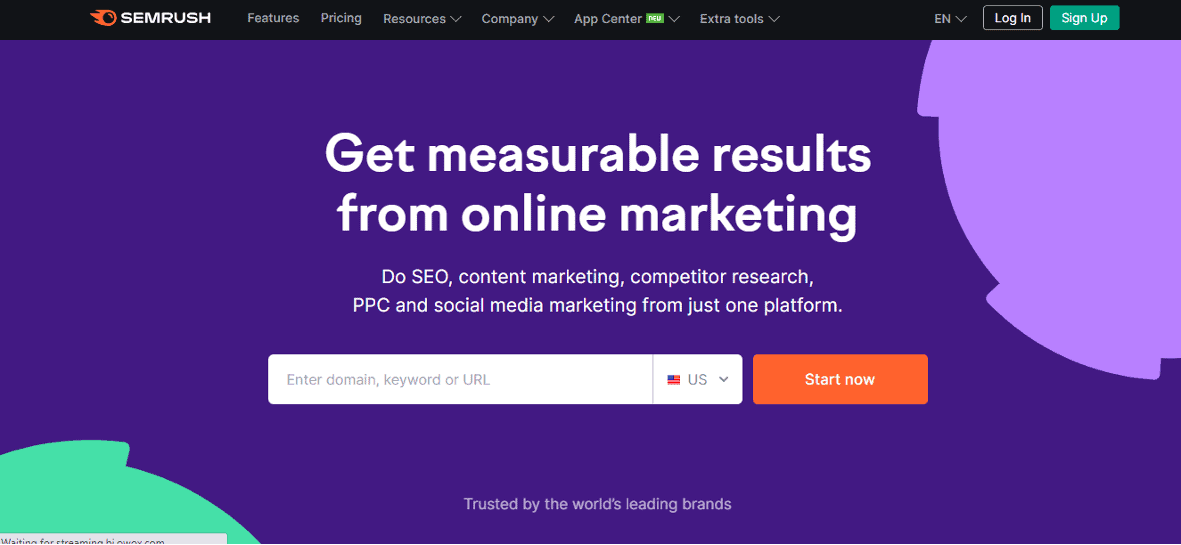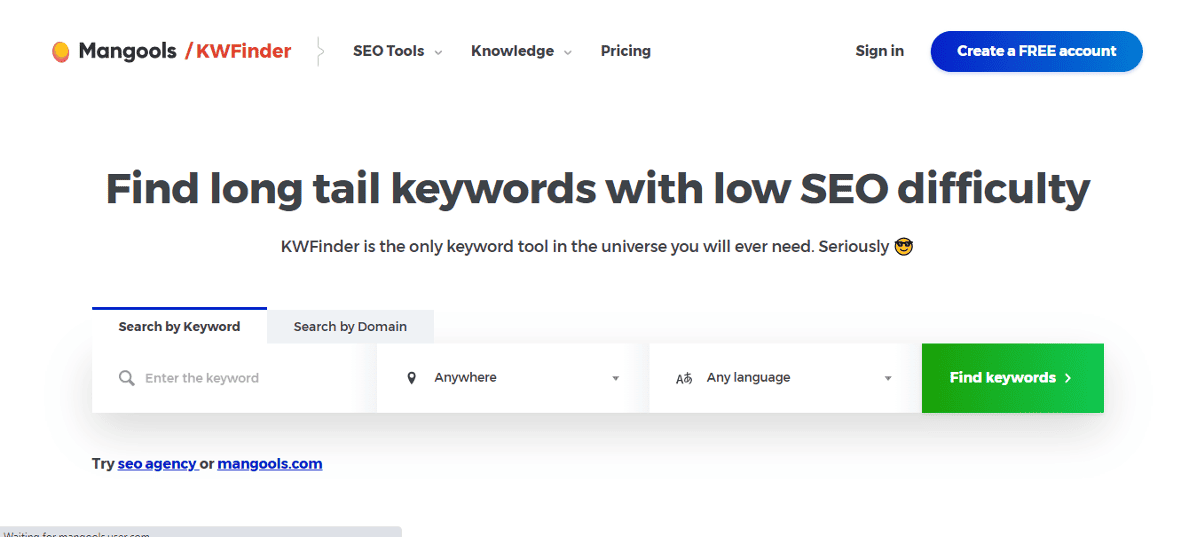If you’re thinking of creating an online store and opting for WordPress, then commendations to you! WordPress is a beginner-friendly platform having around 810 million websites built on it, including eCommerce, community, blogs, and portfolio sites. So, you can create hassle-free websites in any niche, even being a non-techie.
Yes, you don’t require to code!
Though WordPress got recognition as a blogging platform, it introduced WooCommerce in 2011 with equal credibility to stay in the race. WooCommerce is an all-in-one solution that integrates well with WordPress. This integration of WordPress and WooCommerce lets you do wonders. From the features to capabilities and even payment methods, WooCommerce is flexible and scalable.
It’s effortless than what you anticipate. In this ultimate guide to starting an online store with WordPress, we will help you out with the entire process step by step.
Step 1: Finding the Niche
The journey begins here! You must be clear with what you want to sell and what’s the niche market for that product. This can be the most tricky part. In this regard, research greatly assists this endeavor. You must be prepared with a lot of information before diving into making an online store already.
An ideal niche comprises your passion, target audience, and competition. Additionally, there must be growth potential in all aspects. You need to examine all facets.
We can help you with some useful tips for finding the appropriate niche;
- Know what you want
Can you imagine working all your life selling something you don’t believe in? It’s terrific. That’s why it’s incredibly crucial to discover your passion, especially if you want to be a long-term player in the market.
Choose something that interests you, you’re knowledgeable about, and can find the market. Businesses can’t run without obstacles, and passion helps to overcome them. You will be more resilient. While making a website, you will come up with more personalized ideas.
- Conduct Research Using Online Tools
The market is very competitive, and jumping randomly into the pool is risky. Conduct market research through online tools. It contributes to informed decision-making. There are plenty of online tools online to assist you in getting the assurance of what you want.




These tools are doing exceptionally well when you want to just begin with your idea. Apart from that, there are other available tools to help you to validate your idea, make strategies, find a website design, and whatnot.
- Competitor Analysis
What if your idea has already been tried by some people and failed? But why did they fail? Maybe it’s not the idea but the approach that went wrong and made them drip.
Here comes the competitor analysis to save your boat! – You can track their journey and takes notes.
Not every business dealing with the same niche is your enemy. In fact, it can be a potential opportunity to learn from them. They have already completed their journey, and there must be highs and lows. Even what makes their website reach millions and which are the most attractive features they offer on their platform.
Step 2: Choosing the eCommerce Platform
I guess we are pretty sorted here!
We have already discussed starting an online store with WordPress, so it’s all clear here. But that doesn’t suppose to restrict you from opting for other options.
The other impressive eCommerce content management systems are;
- Shopify: It comes with no tech worries, is easily customizable, and is a very reliable platform. Quite popular!

- BigCommerce: It’s a lot similar to Shopify but with different packaging.

- Wix: Its design flexibility is better than that of Shopify.

- Squarespace: It’s known for its sleek templates and prioritizes web designs.

As here, we are talking about WordPress and WooCommerce, let’s help you explore its top-notch advantages.
WooCommerce performs brilliantly with high-volume stores, as claimed on the official website itself. WordPress has created a lot of credibility and authenticity among its users worldwide, and the journey is not a night-long. It took years! So, WooCommerce is benefitted what WordPress has struggled for.
WooCommerce enables you to choose from highly customizable homepage designs and menus to payment and shipping options.
Step 3: Go for a Unique Store Name
This is the most exciting part! But sometimes, it can be daunting too. Make sure to establish a strong identity, so go for a unique yet easy-to-remember store name for your brand. It will help you to stand out amongst your competitors and affect the consumer’s perception of you.
Here, the store name suggests the domain name, the name at the storefront of your website, the advertisers, and everywhere else. Let’s give you an example if you’re selling doughnuts and come up with a brand name such as Sarah’s doughnuts, your domain name must be something like sarahsdoughnuts.com, or something identical.
We suggest you brainstorm a lot of ideas! Explore the internet and list all keywords you can think of for your store. Then try to incorporate those keywords into your store name.
While you can always boost your business with WordPress SEO, choosing a brand-specific yet unique store name can surely contribute to driving the appreciated SEO results.
You can also consider the emotions you want to evoke through this store. In case you want to convey any message through your brand, keep it in mind while thinking of a name.

While no such norm exists for giving a brand name, every industry has its naming conventions. You explore the competitors. Do a lot of research; what’s liked by users and what’s not.
Business name generators can be a good choice if you struggle with name ideas. Ensure to use the reliable one. A good domain name must have a proper structure, and you must learn about it or contact an expert to help you with the same.
Step 4: Acquire Hosting and Install WordPress
The functionality of any website is associated with its hosting, as it is imperative to the smooth operations of a website. If you look at the core, eCommerce stores are websites too. Both a website and eCommerce stores cannot exist without hosting.
Now that you have chosen WordPress as the content management system and successfully created a store name, what’s the next part? You need to realize that a website always requires some server parameters. But here’s the challenge! Those server parameters are sometimes not available with affordable hosts.
Exploring the hosting services to find quality hosting is sometimes formidable. After this step, you need to set up WordPress and WooCommerce. Let’s gear up to break down this process into simple steps.
- Identify a Reliable eCommerce Web Host
Server space is something that a lot of people are willing to offer. The marketplace is enormous, with a size of $56.7 billion. Most web hosting service providers claim that taking up their service will make you issue-free for years, but that’s not true often.
Quality eCommerce host hunting can be more challenging than you think. With loads of competitors in the market, each claiming to be the best may be troublesome for you. So, how do you resolve the confusion and culminate in the right one?
Look for the below-mentioned characteristics;
- Firewalls and Security Features
Hackers attempt to steal customer data to use it for the wrong purposes, and eCommerce websites seem attractive targets to them. Sometimes, a bot attack even disappears the store or tries to extract payments from customers. You must choose a web hosting service with recorded proof of providing security to the website. Implementing reliable plugins like WP Force SSL to secure data transmission and WP Login Lockdown to ward off brute force attacks is also essential in ensuring the safety of your eCommerce site and customer data.
- PCI Compliance
Seek a PCI-compliant service if you want to process credit cards on their server without sending the data to a third party. Moreover, whole cost optimization is required if you’re targeting lower margins. A PCI-compliant service is of great help in that scenario.
- The Clock Customer Support
It’s frustrating to get stuck in a situation and wait for support. Get a service with 24*7 support and assistance already. You never know while encountering the problem, and it may hamper your work for a long time. Don’t let that happen!
Do your research, explore the services, and compare them to pick up the best one.
- SSL Certificate
A padlock icon next to the website address makes your platform trustworthy in customers’ eyes. What else do you want desperately other than that at any stage of your business-building? An SSL certificate is a box you must tick while selecting the host. If the service is not offering you this feature, don’t go with them.
- Backups
We don’t need to explain the importance of having backups. They’re extremely crucial to safeguarding your data. What if the server becomes exhausted overnight? You still can breathe having the right host provider with backup support.
Looking for some web hosting recommendations? Check the following options.
- SiteGround: A prevalent option and a reliable one too. Most people choose this one due to its affordability in pricing.
- Bluehost: What’s the best about Bluehost is that it is beginner friendly and very easy to set up.
- Liquid Web: A little more challenging in comparison to the above two options, but an amazing one.
Breeze is an innovative and comprehensive managed hosting platform designed to elevate your website’s performance and user experience. With a focus on seamless optimization and hassle-free management offering a range of features to streamline your hosting needs. Whether you’re running an online store, a business website, or a content-driven platform, their managed hosting solutions are tailored to ensure top-notch speed, security, and scalability.
Install WordPress
WordPress – the world’s most popular website builder, requires you to know the web software well before installing the software on that particular server.
With various options on web hosting, you can simply install WordPress automatically. You can set it up independently or ask for an expert WordPress development company to take care of everything.
One great example is Bluehost. It allows you to simply sign up and add a WordPress site through the dashboard itself. You need to give only basic details and startup settings. In one-two minute, you’re ready to go live.
Install WooCommerce

In the next stage, you need to install WooCommerce. It might be possible that your web host automatically installs WooCommerce, as a few services offer this too. Moreover, WooCommerce is free!
Coming to WooCommerce, it’s a WordPress plugin. There’s a Plugins section on the dashboard; you can download it directly from there.
Let’s break down all you need to do into the following steps;
- Set your basic details, including;
- Name
- Operational country
- What are your goods
- Currency
- Type of products (physical or digital)
- Pick the main gateway for payments. Either you can go for PayPal, but there are other options too. It is recommended to go for the popular payment methods in your country so that your buyers will find them accessible.
- Choose a suitable shipping zone. WooCommerce allows you to set a shipping zone, which means you can always select and target the area you’re selling. It is good for setting the right shipping prices too.
- Include Extensions. Install the additional extensions to add extraordinary features to the platform. It makes it easier for you to automate taxes, send personalized newsletters, and automatically integrate with shipping careers.
Step 5: Obtain a Streamlined and Optimized Design
Getting a design in today’s world can be quite expensive if you outsource it, but WordPress has affordable options. Some designs come with absolutely no cost at all. There’s a section attributed to the designs called “WordPress themes.” You might have heard of it. It can decide the appearance of your website and features the elements you can display on your website’s pages.
These WordPress themes come with a different look and feel and with different purposes to fit your niche perfectly.
So, what should you look at while choosing a suitable theme for your WooCommerce? See below;
- Customization Options: Check if the theme allows you to customize. Every brand is unique, and no theme can be used without altering it according to one’s needs.
- SEO-friendly: Every element of a website can contribute to the SEO results, from content to themes and images. Look for an SEO-friendly theme to help you to crawl the search engine rankings.
- Impressive Performance: What if you’re shopping, but the store is not loading fast enough? It can make the customers leave the site and opt for other ones. Double-check if your chosen theme performs well.
- Complement the Native Features of WooCommerce: Your theme should be compatible with other features of WooCommerce, including product listings, page checkout, optimized views, cart modules, etc.
Step 6: Include the Products in Catalog
It’s your call to add some missed-out products to the database. Though the stage seems exciting, as you’re halfway done with your setup, you may need some guidance. But the process is quite simple.
WordPress has a focused section for adding products. Hover your cursor over the left menu on the page. Select Products and Add New.
With each product, you will see;
- A title
- A description
- Individual details
- Parameters
Adding to its vast functionality, it lets you add;
- Variable products
- Grouped products
- Single products
WooCommerce also enables you to add physical and digital products.
Click to know how to integrate the WooCommerce product catalog with Facebook and Instagram.
Step 7: Integrate Plugins to Access Extra Features
WordPress plugins contribute to its wholesome awesomeness. The plugins allow you to extend the native and core features of WordPress. They allow you to add the functionality of your choice and make it your brand specific. So, which particular plugins you might need?
Check out the popular options we have listed below;
- WooCommerce Side Cart: It displays the shopping cart on the right side of your page very dynamically.
- Optimole: This is used for image optimization. Images contribute a lot to the loading time and speed of your website; hence using the optimal plugin is necessary.
- All in One SEO: You might have already heard its name, as it’s quite popular. It’s the first choice of many people as it helps you directly in SEO.
- Stripe: It can be a good choice if you’re targeting the USA audience, as it simply allows you to accept Stripe payments.
- Booster for WooCommerce: This plugin comes with more than only one. A few of this plugin’s features include;
- WooCommerce Sales Booster Pack: Get the powerpack you need to sell smart. It’s your ticket to higher order-values and revenue.
- Button and price labels
- Multiple currency support
- PDF invoicing
- Reporting on your store’s results
- Product add-ons.
Most of the above-mentioned plugins have everything you might need as an eCommerce store owner.
Wrap Up
Creating a big brand has no particular time! You can start doing it right away. Building your eCommerce store is one of the initial steps, and WooCommerce comes with a lot of beginner-friendly options, making it the most chosen option for millions around the world.